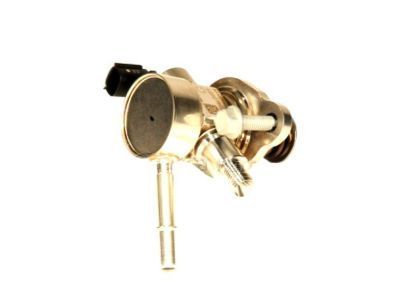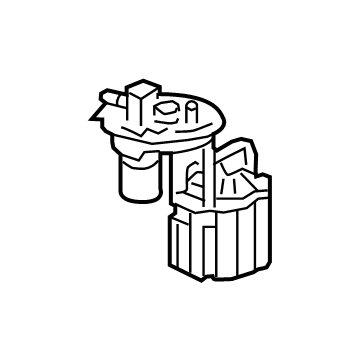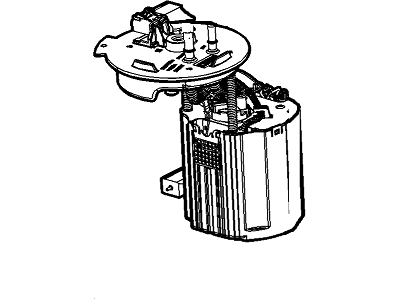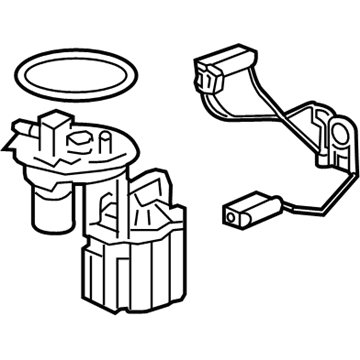
My Garage
My Account
Cart
Genuine Chevrolet Cruze Fuel Pump
Gas Pump- Select Vehicle by Model
- Select Vehicle by VIN
Select Vehicle by Model
orMake
Model
Year
Select Vehicle by VIN
For the most accurate results, select vehicle by your VIN (Vehicle Identification Number).
8 Fuel Pumps found
Chevrolet Cruze Fuel Pump Assembly
Part Number: 12682079$170.98 MSRP: $349.83You Save: $178.85 (52%)Ships in 1-2 Business DaysChevrolet Cruze Fuel Tank Fuel Pump Module Kit (W/O Fuel Level Sensor)
Part Number: 13510671$322.41 MSRP: $608.31You Save: $285.90 (47%)Ships in 1-2 Business DaysChevrolet Cruze Fuel Tank Fuel Pump Module Kit (W/O Fuel Level Sensor)
Part Number: 42706338$205.75 MSRP: $388.20You Save: $182.45 (47%)Ships in 1-2 Business DaysChevrolet Cruze Fuel Tank Fuel Pump Module Kit (W/O Fuel Level Sensor)
Part Number: 13596945$279.47 MSRP: $527.30You Save: $247.83 (47%)Ships in 1-2 Business DaysChevrolet Cruze Module Kit, F/Tnk F/Pmp (W/O Fuel Lvl Se)
Part Number: 13510661$205.36 MSRP: $387.46You Save: $182.10 (47%)Ships in 1-2 Business DaysChevrolet Cruze Module Kit, F/Tnk F/Pmp (W/O Fuel Lvl Se)
Part Number: 13510673$221.86 MSRP: $453.94You Save: $232.08 (52%)Ships in 1-2 Business DaysChevrolet Cruze Fuel Tank Fuel Pump Module Kit (W/O Fuel Level Sensor)
Part Number: 13596755$240.45 MSRP: $453.71You Save: $213.26 (47%)Chevrolet Cruze MODULE KIT,F/TNK F/PMP (W/O FUEL LVL SEN)
Part Number: 19421048$253.49 MSRP: $471.69You Save: $218.20 (47%)
Chevrolet Cruze Fuel Pump
The Fuel Pump of Chevrolet Cruze cars is involved in a great extent in supplying fuel to the engine for efficient combustion. It distributes fuel from the tank to the carburetor or the fuel injection system and the electric pumps primarily in the injection systems. Fuel delivery is provided by mechanical pumps which are chain driven from the camshaft; the fuel passes to the carburettors. Performance fuel pumps are rated by the sheer number of gallons or liters per hour that it is capable of delivering and the application types may include a high horsepower. Initially, mechanical pumps were mounted on the engine, but nowadays, electric pumps provide higher pressures and efficiency with new up-to-date technologies as PWM for longer pump's working time and minimal power consumption.
Each OEM Chevrolet Cruze Fuel Pump we offer is competitively priced and comes with the assurance of the manufacturer's warranty for the part. Furthermore, we guarantee the speedy delivery of your orders right to your doorstep. Our hassle-free return policy is also in place for your peace of mind.
Chevrolet Cruze Fuel Pump Parts Questions & Experts Answers
- Q: How to remove and install a fuel pump/fuel level sending unit module on Chevrolet Cruze?A: Disconnect the cable from the negative battery terminal. Relieve the system fuel pressure. Remove the Fuel Tank. Disconnect the fuel supply line, vent line and electrical connectors from the fuel pump/fuel level sending unit module. Use a shop rag to soak up any spilled fuel. Using a pair of large water pump pliers, unscrew the fuel pump/fuel level sending unit module lock ring by turning it counterclockwise. If the lock ring is tight, use a hammer and a brass punch to loosen it. Be careful not to distort the lock ring, or it will have to be replaced. Note the orientation of the fuel pump in relation to the fuel tank to ensure that the fuel pump is correctly realigned when you install it again. Remove the fuel pump/fuel level sensor module, taking care not to damage the fuel level sensor float arm and float. Before installing the pump, inspect the pump-to-tank seal. It's recommended to replace the seal whenever the module has been removed. Installation is the reverse of removal. Align the fuel pump/fuel level sending unit module with its hole in the tank and carefully insert it into the tank, then align the marks noted earlier. Make sure that you don't damage the fuel inlet strainer, the float arm or the float during installation. If the float arm is bent, the fuel level that is indicated on the fuel level gauge on the instrument cluster will be incorrect. Whenever the battery has been disconnected, the Powertrain Control Module (PCM) must relearn its former driveability and performance characteristics.
- Q: How can I check the operation of the fuel pump on Chevrolet Cruze?A: To verify the operation of the fuel pump, try to listen for a brief sound it makes when you turn the ignition on and pressurizes the fuel system before starting your engine. Should you not hear any pump, then open up your fuel filler cap, push down on the spring loaded hatch within the neck of your gas tank, and have someone else turn on the ignition while you listen for about two seconds as to whether or not it is functioning. If this pump does not come on, you should inspect whether both relay and fuse are in a good condition located in relay box of engine compartment along with wires going back to it. In that case, chances are that the pump is broken. However, if it functions continuously when turning ON key expect that Powertrain Control Module (PCM) may be damaged so take it to qualified mechanic for diagnosis. To do a fuel pressure test find a Schrader valve test port on your Fuel Rail (for 2016 and newer models; high-side fuel pressure can only be checked with scan tool). Release fuel pressure and close bleeder valve on gauge at fuel outlet. On 2016 and later models release system pressure disconnect low-pressure feed line from high-pressure pump tee-in gauge assembly using appropriate adapters Turn key to ON position note gauge reading as pressure stabilizes compare reading against specification If pressure differs from specified value look for restriction in fuelsection replace module where necessary Also ensure pressure drops below 87 psi after key off and doesn't drop by more than 5 psi per minute; otherwise there might be leaky injector or bad module Finally start car check pressures swap out module if needed ensuring no lines are spilling out afterwards.
- Q: How to remove the fuel rail fuel pressure sensor and high-pressure fuel pump on Chevrolet Cruze?A: In order to take off the Fuel Pressure Sensor, first, remove the oil filler cap and engine cover fasteners. Then, lift the engine cover along with the valve cover insulator off of the valve cover and reinstall oil filler cap. Next, relieve the fuel system pressure and disconnect cable from negative battery remote terminal. Finally, disconnect the Fuel Pressure Sensor electrical connector and unscrew and remove it from the Fuel Rail. Clean thread in fuel rail and put a drop of oil on new sensor threads before installing it. Remove sensor again, apply another drop of clean engine oil on threads then reinstall it. Connect the sensor electrical connector and reverse removal process. To remove high-pressure fuel pump, start by removing charge air cooler outlet hose. Disconnect harness connector to the fuel rail and harness connector from camshaft position sensor. Unclip wiring harness retainers then move them out of way of harness and connectors. Remove sound insulator around pump body. Unscrew intermediate high-pressure line fittings between fuel rail and fuel pump; remove bracket bolt for this line as well as for those that hold wiring harnesses for low-pressure feedline disconnection at high pressure electrical component(s). So now, we have removed low-pressure feed line too! Get rid of high-pressure fuel pump bolts removing pump itself also gasket or lifter follower (if any). Lifter follower must be lubricated using clean engine oil before being installed into bore on cylinder head so where does that leave us, Put alignment gauge in place rotate motor until gauge is level with top side of cylinder head now take out alignment gauge if necessary pull up on valve lifter follower insert it into bore lubricate it with some engine oil let's get things done here people! Just tighten bolts evenly using new O-ring gasket to secure pump position bore; thus completing remainder installation procedures which are carried out exactly opposite order since The Rest Is Reverse Of Removal Process in this case, Reconnect the cable to the negative battery remote terminal, start the engine and check for fuel leaks.














